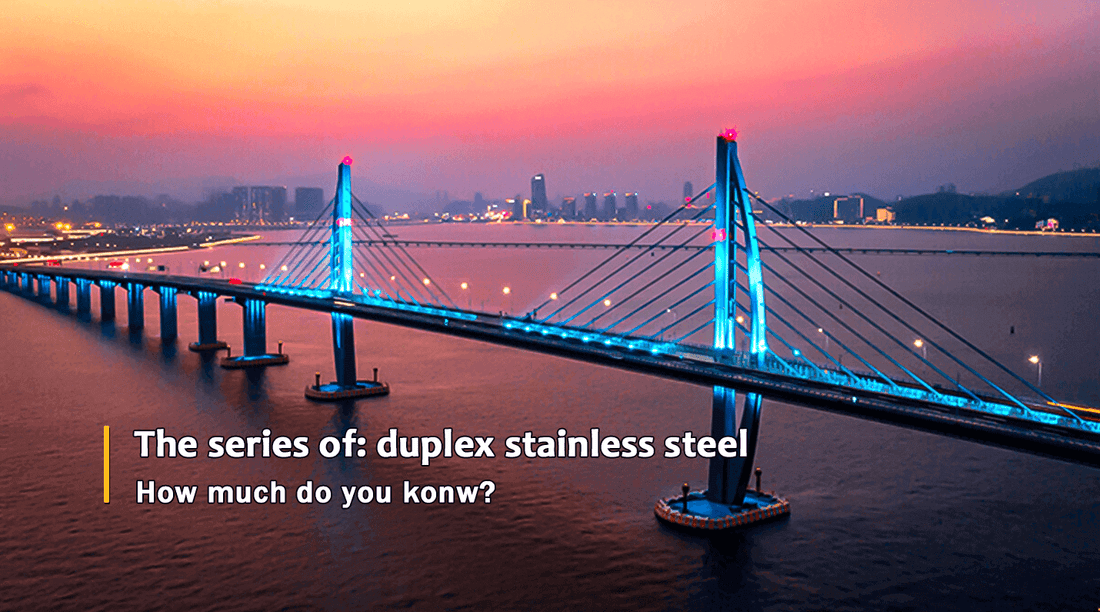Duplex stainless steel is also called duplex steel. Steel composed of martensite, austenite or bainite and ferrite matrix. Generally, the steel composed of ferrite and austenite is called duplex stainless steel. In the solid solution structure of duplex stainless steel, there are 50% ferrite and 50% austenite. Duplex stainless steel combines the advantages of austenitic and ferritic stainless steel. Duplex stainless steel has the advantages of high strength, good resistance to chloride stress corrosion, strong formability, high weldability and good resistance to intergranular corrosion.
Performance characteristics and application:
- The dual-phase stainless steel added with trace element molybdenum has good chloride stress corrosion resistance under low stress. Therefore, it can be well used in the chemical industry to prepare heat exchanger, evaporator and other equipment.
- It has good wear resistance and fatigue resistance. These characteristics are widely used in power equipment requiring high strength and corrosion resistance, such as pumps, valves, etc.
- It has good weldability and low tendency of hot cracking. It can be used for dissimilar welding with austenitic stainless steel or carbon steel and other metals.
- It has good thermal conductivity and small linear expansion coefficient, which makes it suitable for manufacturing equipment lining, composite plate and tube core of heat exchanger.
Application case:
In China, duplex stainless steel is mainly used in petrochemical industry. It can still maintain excellent performance in highly corrosive environment, such as ethylene plant, ethylene oxide cracking ethylene plant, etc. The corrosion resistance of duplex stainless steel mainly depends on the chromium content, and the chromium content mainly depends on the iron content. Compared with austenitic stainless steel, duplex stainless steel has higher corrosion resistance. For example, it can be used to manufacture corrosion resistant steel or low-temperature steel in ethylene plant.
Duplex stainless steel has good corrosion resistance, which mainly depends on the content of chromium and nickel. Chromium is one of the most important alloying elements in steel. It can improve the corrosion resistance of steel through solution strengthening, precipitation strengthening and intragranular strengthening. Nickel can improve the plasticity and toughness of steel, and help to improve the corrosion resistance of steel. Therefore, duplex stainless steel is widely used in bridge engineering.
In 2018, duplex stainless steel will play an important role in the construction of Hong Kong, Macao and the Pearl River Bridges. Although the traditional stainless steel material is not easy to be corroded, it can not maintain good performance in the complex marine environment. However, because of the special structure and excellent performance of duplex stainless steel, it can be used in the manufacture of bridge bearing platform, tower base and pier body structure. The application of a large number of duplex steel in the bridge body has greatly extended the service life of the bridge and reduced the maintenance cost of the bridge. Among them, austenitic duplex stainless steel is used in the bearing platform and tower base of the main bridge. Austenitic duplex stainless steel combines the advantages of austenitic duplex steel and duplex stainless steel. Because the chromium content of austenitic dual-phase steel is relatively high, martensitic transformation will occur at low temperature, resulting in a decline in its corrosion resistance, while the combination of dual-phase stainless steel can change this disadvantage. The dual-phase stainless steel contains a large amount of nickel, which can increase the nickel content in the steel and improve the corrosion resistance of the steel. Therefore, austenitic duplex stainless steel is used in the cushion cap and tower base of the main bridge of the Pearl River Bridge, which meets the structural requirements.
 Tel:+86-21-67890007
Tel:+86-21-67890007
 E-mail:inquiry@ninesteel-cs.com
E-mail:inquiry@ninesteel-cs.com
 Inquiry Now
Inquiry Now



